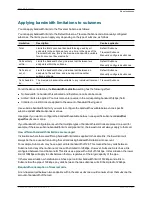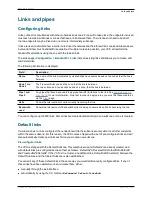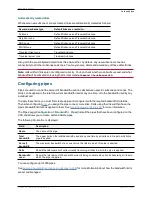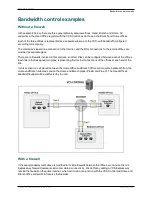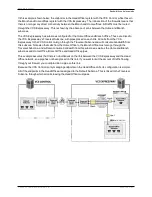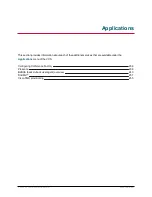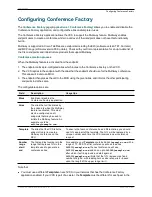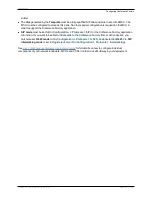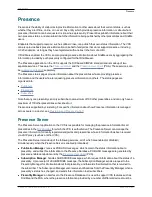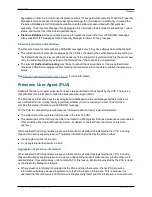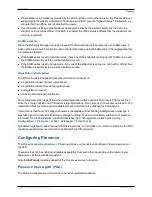
n
Enabled
: if the PUA is enabled, it will publish presence information for all locally registered endpoints,
whether or not those endpoints are also publishing their own presence information. Information published
by the PUA will be routed to a Presence Server acting for the endpoint’s domain. This could be the local
Presence Server, or (if this is disabled) a Presence Server on another system that is authoritative for that
domain.
n
Disabled
: if the PUA is disabled, only those endpoints that support presence will publish presence
information. No information will be available for endpoints that do not support presence.
You can also configure the
Default published status for registered endpoints
. This is the presentity
status published by the Presence User Agent for registered endpoints when they are not "In-Call". The
options are either
Online
or
Offline
. Note that:
n
If this is set to
Online
, any permanently registered video endpoints and FindMe entries that include those
endpoints will appear as permanently "Online".
n
The status of non-registered endpoints always appears as "Offline".
n
"Online" status appears as "Available" in Lync clients.
Presence Server
The Presence Server manages the presence information for all presentities in the SIP domains for which the
VCS is authoritative.
n
Enabled
: if the local Presence Server is enabled, it will process any PUBLISH messages intended for the
SIP domains for which the local VCS is authoritative. All other PUBLISH messages will be proxied on in
accordance with the VCS’s SIP routing rules. Note that SIP routes are configured using the CLI only.
l
The Presence Server requires that any messages it receives have been pre-authenticated (the Presence
Server does not do its own authentication challenge).
You must ensure that the subzone through which PUBLISH messages are being received has its
Authentication policy
is set to either
Check credentials
or
Treat as authenticated
, otherwise the
messages will be rejected.
n
Disabled
: if the local Presence Server is disabled, the VCS will proxy on all PUBLISH messages to one or
more of its neighbor zones in accordance with its locally configured
call routing
rules. The local VCS will do
this regardless of whether or not it is authoritative for the presentity’s domain. If one of these neighbors is
authoritative for the domain, and has a Presence Server enabled, then that neighbor will provide presence
information for the presentity.
Regardless of whether or not the Presence Server is enabled, the VCS will still continue to receive PUBLISH
messages if they are sent to it from any of the following sources:
n
locally registered endpoints that support presence
n
the local PUA (if enabled)
n
remote SIP Proxies
Note that Presence Server is automatically enabled when the
Starter Pack
option key is installed.
Recommendations
n
VCS Expressway and VCS Control
: the recommended configuration for a VCS Expressway when
acting as a traversal server for a VCS Control is to enable the PUA and disable the Presence Server on the
VCS Expressway, and enable the Presence Server on the VCS Control. This will ensure that all PUBLISH
messages generated by the PUA are routed to the VCS Control.
Cisco VCS Administrator Guide (X8.1.1)
Page 241 of 507
Applications
Presence


